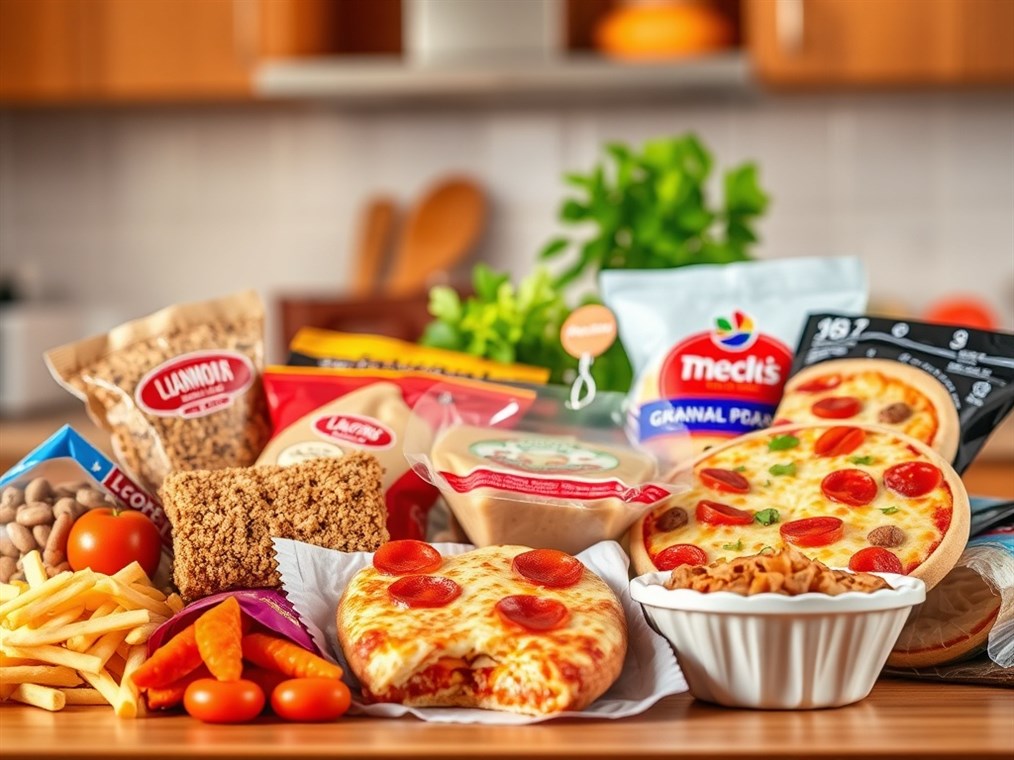Decoding “Commercially Prepared Food”: What It Is, Why It Matters
Okay, let’s talk about commercially prepared food. It’s everywhere, right? From that quick granola bar you grab in the morning to the frozen pizza you pop in the oven on a busy weeknight. But have you ever really stopped to think about what “commercially prepared” actually means? It’s more than just grabbing something off the shelf, and understanding the nuances is key to making smart choices about what you eat.
So, what is commercially prepared food? Simply put, it’s any food or drink that’s been cooked up, processed, or packaged by a food company or restaurant, following all the food safety rules, of course. Think about it: that covers a lot of ground! It’s designed for convenience, meaning it’s usually ready to eat or requires minimal effort on your part. As the dictionary puts it, it’s food “prepared by manufacturers and sold to be eaten at home.” Pretty straightforward, huh?
You might also hear it called “convenience food,” which is a pretty apt description. These foods are commercially prepared, often processed to make them super easy to eat, and usually ready to go with little to no prep. Think portable snacks, long shelf lives – anything that makes your life a little easier.
What are we talking about, exactly?
The range of commercially prepared foods is mind-boggling. Here are just a few examples to get your mental wheels turning:
- Ready-to-eat meals: We’re talking frozen dinners, canned soups (remember those?), pre-made sandwiches, and those bagged salads you see everywhere.
- Snack foods: Ah, the land of chips, crackers, cookies, and candy. And let’s not forget the pre-packaged nuts and dried fruit – sometimes a healthier choice, sometimes not!
- Processed meats: Bacon, sausage, hot dogs, deli meats… the usual suspects.
- Packaged mixes: Cake mixes, pancake mixes, instant oatmeal. Baking shortcuts, basically.
- Beverages: Sodas, bottled juices, and all those non-dairy milk alternatives lining the shelves.
- Infant foods: Baby food purees and cereals. A whole industry dedicated to tiny humans.
- Restaurant and fast food meals: From your favorite burger joint to that fancy Italian place down the street, it all counts.
The Nutrition Question: The Good, the Bad, and the Ultra-Processed
Here’s where things get a little tricky. Not all commercially prepared food is created equal. Some can definitely fit into a healthy diet, but many are loaded with sugar, salt, and unhealthy fats, while skimping on the good stuff like fiber and vitamins.
A big buzzword these days is “ultra-processed foods.” These are the ones that have gone through a lot of industrial processing and are often packed with additives, preservatives, and artificial flavors and colors. Think bright orange chips or neon-colored candies. These tend to be low in protein and fiber and high in saturated fat and sugar compared to simpler, less processed options.
Even baby food isn’t immune! There are concerns about the sweetness of some commercial baby foods, how easily babies can absorb the nutrients, and whether they offer enough variety. Some might have too much sugar or not enough of the good stuff.
And let’s not forget about additives. They’re in tons of commercially prepared foods to change the color, texture, flavor, and even the smell! Preservatives and sweeteners are also common.
Your Health: Why It Matters
Here’s the bottom line: eating a lot of commercially prepared foods, especially the ultra-processed kind, can have some not-so-great effects on your health. Studies have linked them to:
- Increased risk of chronic diseases: We’re talking obesity, high blood pressure, type 2 diabetes, and heart problems. Not fun. One study even found a link between ultra-processed food and a higher risk of type 2 diabetes.
- Weight gain: All those extra calories and unhealthy ingredients can lead to unwanted pounds.
- Nutrient deficiencies: When food is heavily processed, it can lose a lot of its natural goodness.
- Increased cancer risk: Sadly, research has suggested that a higher intake of ultra-processed food might be linked to a higher risk of cancer.
The Rules of the Game: Regulations and Standards
Thankfully, there are rules in place to help keep us safe. The food industry is subject to regulations and standards designed to ensure food safety and give us accurate information.
- Food safety regulations: Restaurants and food manufacturers have to follow strict rules for handling, safety, and sanitation.
- Labeling requirements: There are laws about what has to be on food labels, including nutrition information and health claims.
- Good Manufacturing Practices (GMPs): Commercial food businesses have to follow GMPs, which cover the basic conditions needed to produce safe food.
- Where not to make food: You can’t just set up a food business in your living room! There are rules about where you can and can’t prepare food commercially.
So, What Can You Do?
Commercially prepared foods aren’t going anywhere. They’re a fact of life in our busy world. But you can make smart choices. Here are a few tips:
- Become a label detective: Read those labels carefully! Pay attention to serving sizes, ingredients, and the nutrition facts panel.
- Go easy on the ultra-processed stuff: Try to make whole, unprocessed, or minimally processed foods the star of your diet. Think fruits, vegetables, lean proteins, and whole grains.
- Get cooking! Preparing meals at home gives you control over what goes into your food. Plus, it can be a lot of fun!
- Choose wisely: When you do opt for commercially prepared foods, look for options that are lower in sugar, salt, and unhealthy fats and higher in fiber and nutrients.
- Don’t fall for the hype: Be skeptical of those “health halo” claims on packaging. Just because something says it’s healthy doesn’t mean it actually is!
The Bottom Line
Commercially prepared food is a big part of our lives. It can be convenient, but it’s important to be aware of the potential downsides. By making informed choices and focusing on whole, unprocessed foods as much as possible, you can navigate the world of commercially prepared food in a way that supports your health and well-being. It’s all about balance!

